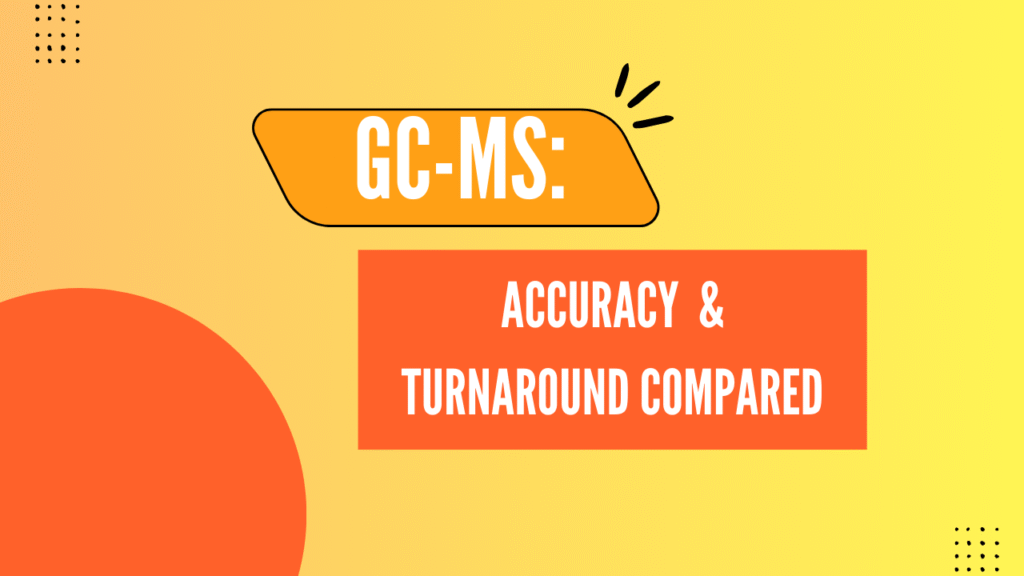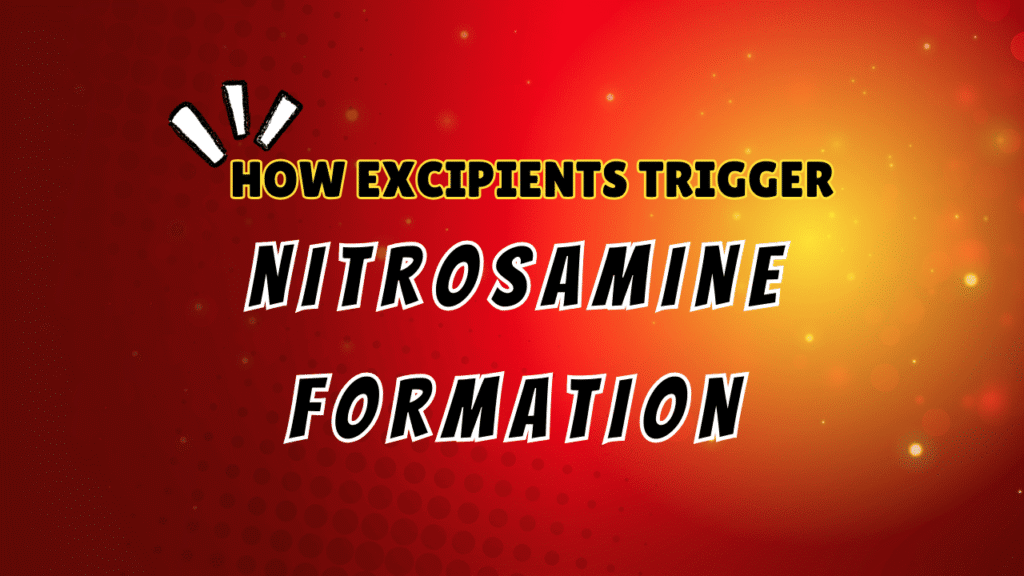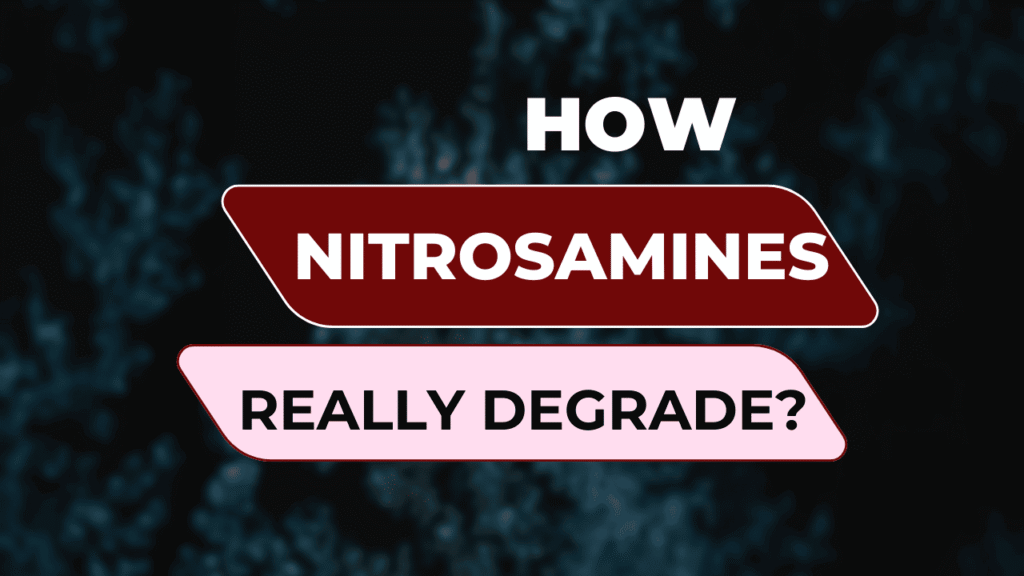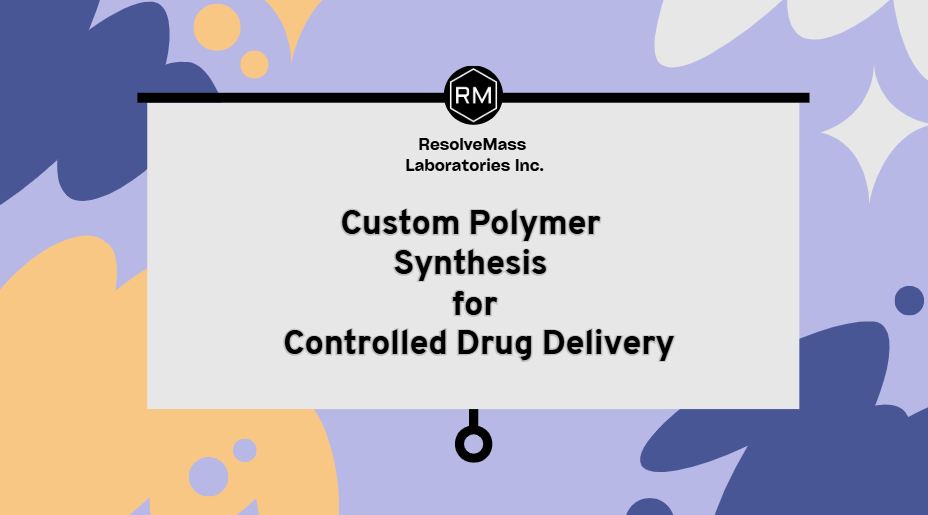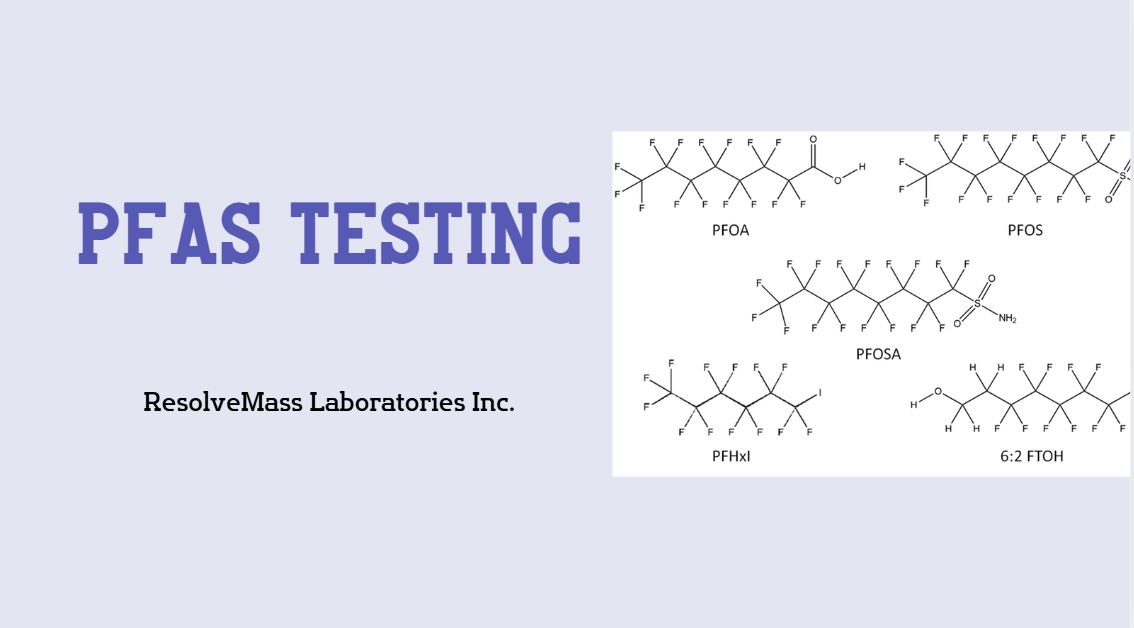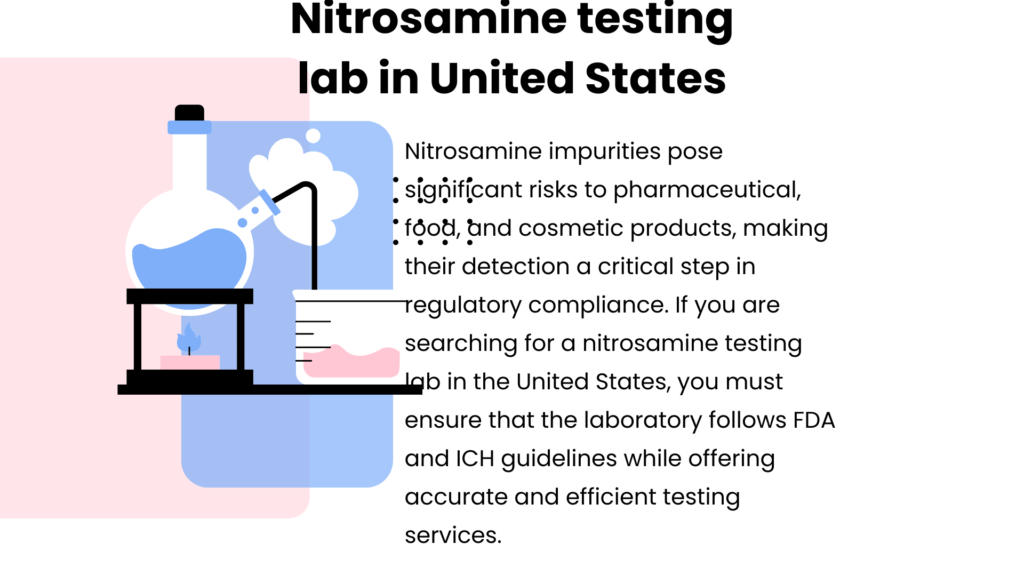
Introduction
In recent years, the United States Food and Drug Administration (FDA) has heightened its focus on nitrosamine impurity testing in United States due to a surge in drug recalls linked to these potentially carcinogenic contaminants. Nitrosamines—classified as probable human carcinogens by the International Agency for Research on Cancer (IARC)—have been detected in widely prescribed medications, including angiotensin II receptor blockers (ARBs), antidiabetics (e.g., metformin), and antacids (e.g., ranitidine).
The presence of nitrosamines in pharmaceuticals can result from chemical reactions during API synthesis, degradation during storage, or interactions with packaging materials. Given the severe health risks and regulatory repercussions, routine nitrosamine impurity testing is no longer optional—it is a critical compliance requirement to prevent FDA enforcement actions, costly recalls, and reputational damage.
At ResolveMass Laboratories Inc., we specialize in state-of-the-art nitrosamine impurity testing in United States, helping pharmaceutical manufacturers comply with FDA, EMA, and ICH M7(R1) guidelines. This comprehensive guide explores:
- The growing regulatory scrutiny on nitrosamines
- Why early detection is crucial to avoid recalls
- Best analytical methods for nitrosamine testing
- Industries most at risk
- How ResolveMass Laboratories can support your compliance needs
Why Nitrosamine Impurity Testing is Essential for FDA Compliance
1. The Rising Threat of Nitrosamine Contamination in Pharmaceuticals
Nitrosamines (e.g., NDMA, NDEA, NMBA) are genotoxic impurities that can form during drug manufacturing or storage. The FDA first identified widespread contamination in 2018 with the valsartan recall, followed by additional recalls affecting ranitidine, metformin, and other drugs.
Key Sources of Nitrosamine Formation:
- API Synthesis: Use of nitrosating agents (e.g., sodium nitrite) in production. 👉 Understand the science behind nitrosamine formation.
- Degradation: Breakdown of drug molecules under heat, light, or humidity.
- Excipients & Packaging: Interaction between amines and nitroso compounds in packaging materials.
Regulatory agencies have set strict permissible daily intake (PDI) limits, such as:
- NDMA: 96 ng/day
- NDEA: 26.5 ng/day
- NMBA: 96 ng/day
👉 Explore our detailed guide on regulatory limits for nitrosamine impurities.
Non-compliance can lead to FDA 483 observations, warning letters, or mandatory recalls.
👉 Partner with a trusted nitrosamine impurity analysis lab
2. FDA & Global Regulatory Expectations for Nitrosamine Testing
The FDA, EMA, and Health Canada have issued guidelines requiring manufacturers to:
- Conduct risk assessments for nitrosamine formation.
- Implement routine nitrosamine impurity testing for high-risk drugs.
- Submit analytical data proving compliance.
Make sure your ANDA meets nitrosamine standards – Nitrosamine Impurity Testing for ANDA Submissions
ICH M7(R1) classifies nitrosamines as “Class 1” mutagens, necessitating control strategies such as:
- Limiting nitrosamine levels below threshold limits.
- Validated analytical methods (LC-MS/MS, GC-MS).
- Stability studies to assess degradation risks.
Our nitrosamine analysis services ensure full compliance with these evolving regulations.
How Routine Nitrosamine Impurity Testing in United States Prevents Recalls
The High Cost of FDA Recalls – Why Early Detection Matters
Pharmaceutical recalls due to nitrosamine contamination have led to:
- Billions in losses (e.g., Zantac litigation cost $1.1 billion).
- Supply chain disruptions (e.g., metformin shortages in 2020).
- Loss of consumer trust (brand reputation damage).
Case Study: The Ranitidine Recall
- In 2019, the FDA detected NDMA in ranitidine (Zantac) at levels exceeding 3,000 ng/tablet.
- Major manufacturers (GSK, Sanofi, Novartis) faced global recalls and lawsuits.
- Proactive testing could have prevented this crisis.
Best Analytical Methods for Nitrosamine Impurity Testing
ResolveMass Laboratories employs cutting-edge techniques for ultra-trace detection:
A. Liquid Chromatography-Tandem Mass Spectrometry (LC-MS/MS)
- Gold standard for nitrosamine detection.
- Detection limit: As low as 0.001 ppm (1 ppb).
- Validated per FDA/ICH guidelines.
B. Gas Chromatography-Mass Spectrometry (GC-MS)
- Ideal for volatile nitrosamines (e.g., NDMA, NDEA).
- Used in stability and forced degradation studies.
C. High-Resolution Accurate Mass (HRAM) Orbitrap Technology
- Detects unknown nitrosamine impurities via non-targeted screening.
- Essential for comprehensive risk assessment.
Learn how to detect hidden NDSRIs – Understanding Nitrosamine Drug Substance-Related Impurities (NDSRIs) in Nitrosamine Testing
Our nitrosamine testing services provide fast, accurate, and regulatory-compliant results.
Industries Most at Risk – Who Needs Nitrosamine Testing?
APIs, Generics, & OTC Drugs
- Sartan-based drugs (valsartan, losartan) – High nitrosamine risk.
- Metformin (antidiabetic) – Multiple FDA alerts. Learn how metformin is tested for nitrosamines – Nitrosamine Testing in Metformin and Its Finished Product
- Ranitidine (antacid) – Banned in US/EU due to NDMA.
Biologics & Excipients
- Nitrosamines can form in excipients (e.g., povidone, crospovidone).
- Biologics may contain nitrosamines from cell culture media.
Explore nitrosamine risk in cinacalcet – Nitrosamine Testing in Cinacalcet
Packaging & Storage Conditions
- Rubber stoppers, blister packs can leach nitrosating agents.
- High-temperature storage accelerates degradation.
👉 Explore proactive testing approaches
Partner with ResolveMass for Reliable Nitrosamine Testing
Why Choose ResolveMass Laboratories?
- FDA-Compliant Testing: Full adherence to ICH M7(R1), USP <1469>.
- Rapid Turnaround: Results in as little as 7-10 days.
- Expert Consultation: Regulatory support for risk assessments & mitigation.
👉 Explore our CRO services for nitrosamine risk evaluation and mitigation.
Our Nitrosamine Testing Process
- Risk Assessment – Identify potential nitrosamine sources.
- Method Development – Optimize LC-MS/MS/GC-MS protocols.
- Sample Analysis – Quantify nitrosamine levels.
- Regulatory Reporting – Detailed compliance documentation.
👉 Use this expert guide to perform a thorough nitrosamine risk assessment.
Ensure your products are safe—explore our nitrosamine analysis services.
Conclusion: Proactive Testing Prevents Costly Recalls
With increasing FDA scrutiny, pharmaceutical companies must prioritize routine nitrosamine impurity testing in United States to:
✔ Avoid regulatory penalties
✔ Protect patient safety
✔ Maintain brand integrity
👉 Get a clear understanding of acceptable intake levels for nitrosamines.
Don’t wait for a recall—act now.
Contact ResolveMass Laboratories today for a consultation!
References
- EMA. (2021). Assessment and Mitigation of Nitrosamine Risk in Human Medicines. https://www.ema.europa.eu/en/documents/referral/nitrosamines-emea-h-a53-1490-assessment-report_en.pdf
- FDA. (2021). Control of Nitrosamine Impurities in Human Drugs. https://www.fda.gov/media/141720/download
- Health Canada. (2020). Guidance on Nitrosamine Impurities in Medications. https://www.canada.ca/en/health-canada/services/drugs-health-products.html
- ICH. (2023). ICH M7(R2) – Control of Mutagenic Impurities. https://database.ich.org/sites/default/files/M7_R2_Guideline_Step4_2023_0223.pdf
GC-MS Method Development & Validation Services: What Pharma Companies Should Look For
Introduction GC-MS method development is a critical cornerstone of pharmaceutical quality control, impurity profiling, and…
Best GC-MS Analysis Services in North America: How to Compare Labs for Accuracy and Turnaround Time
Introduction When your research, product development, or regulatory compliance depends on reliable analytical data, selecting…
Role of pH, Temperature, and Process Parameters in Nitrosamine Formation: A Formulation Risk Model
Introduction: Understanding Process Parameters in Nitrosamine Formation Nitrosamine formation in pharmaceutical products is not accidental….
Packaging Interaction and Nitrosamine Formation: How Blister Films, Elastomers, and Containers Influence Impurities
Summary — Key Takeaways Packaging materials can catalyze or inhibit nitrosamine formation through extractable, leachable,…
Excipient Variability and Its Impact on Nitrosamine Formation: A Deep Technical Investigation
Introduction: Understanding Excipient Impact on Nitrosamine Formation The Excipient Impact on Nitrosamine Formation has become…
The Science Behind Nitrosamine Degradation Pathways: What Every Formulation Scientist Should Know
Summary of Key Insights Nitrosamine degradation pathways govern the chemical fate of nitrosamines during formulation,…

